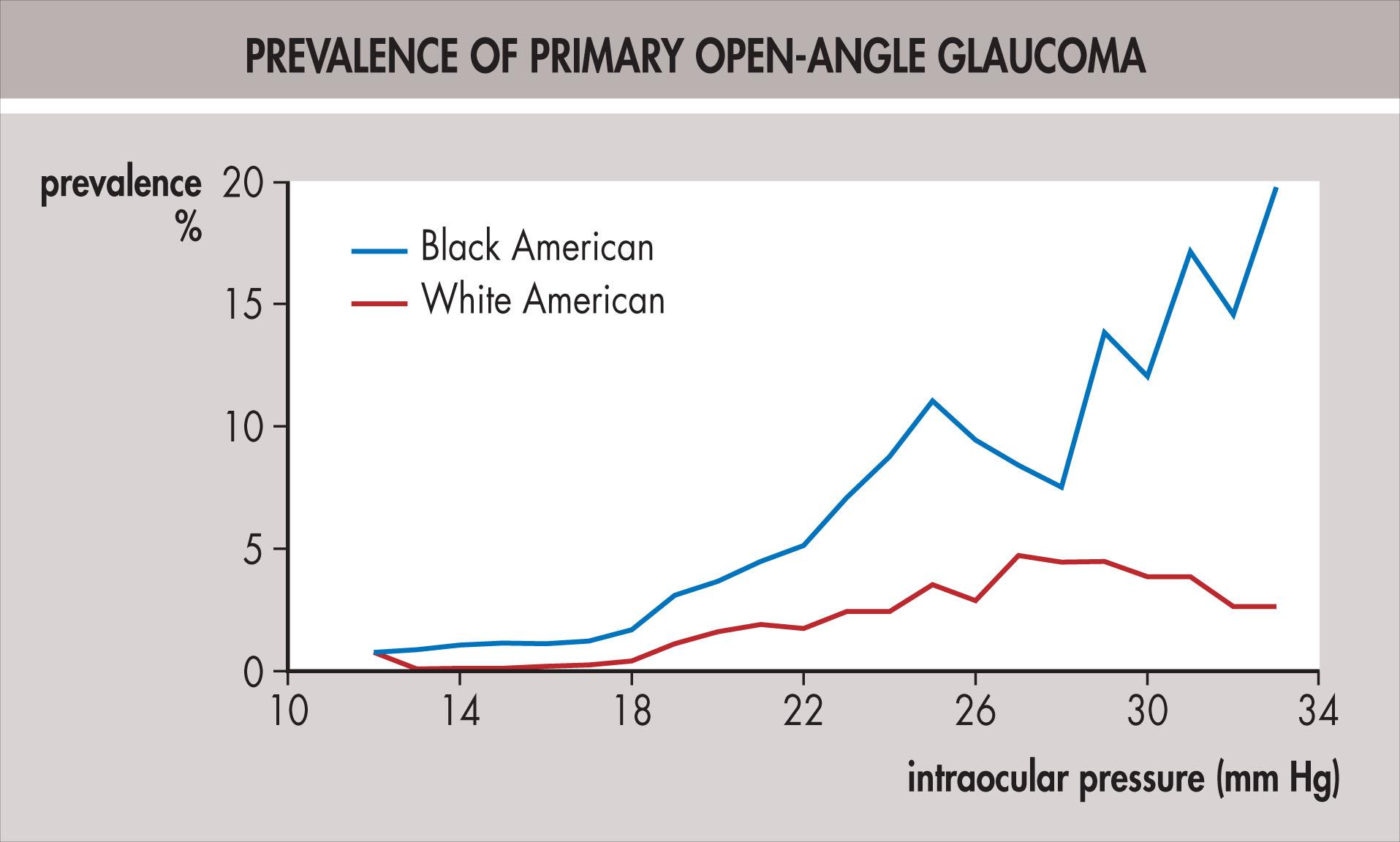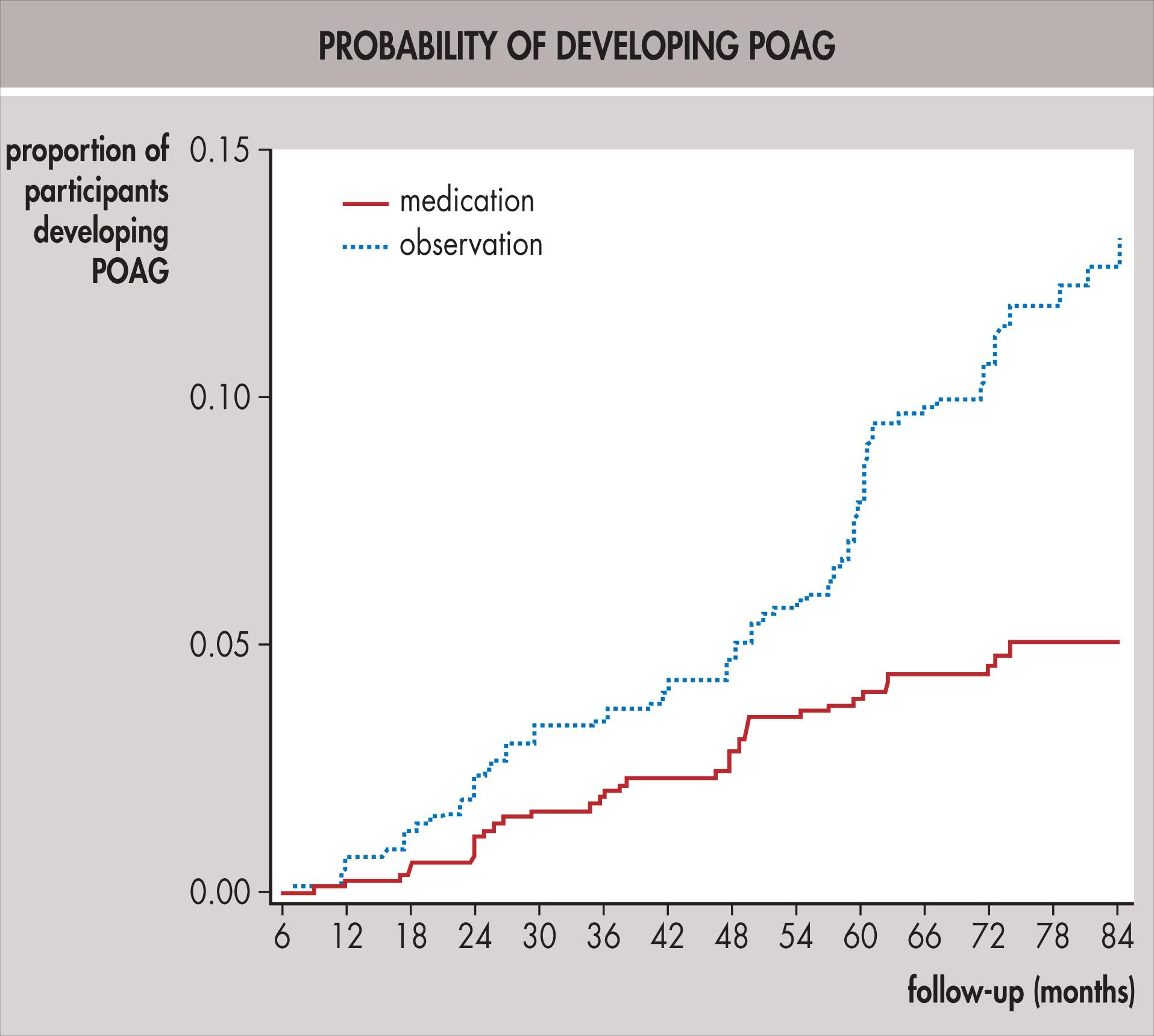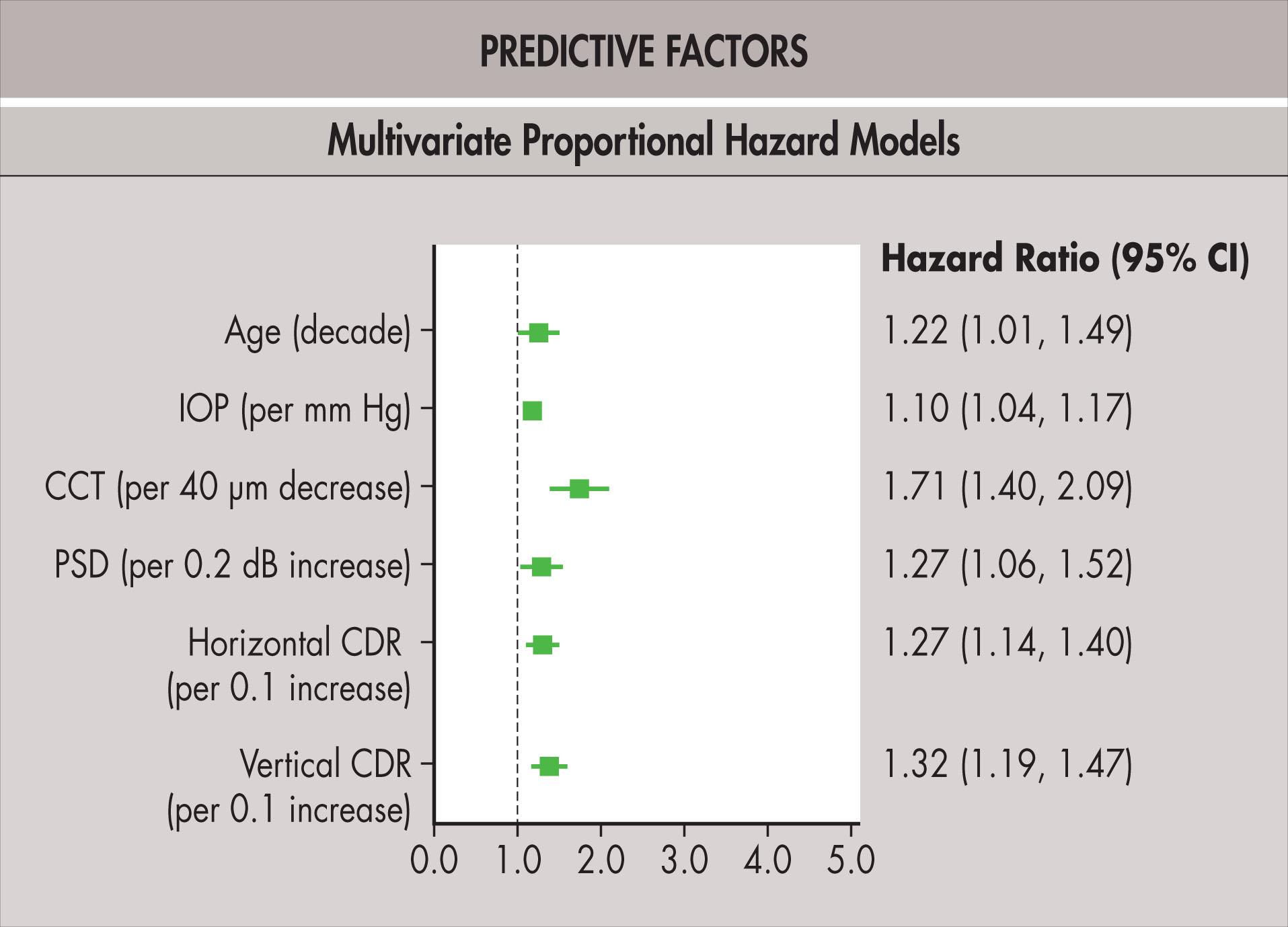Physical Address
304 North Cardinal St.
Dorchester Center, MA 02124
Patients should be treated when glaucomatous damage is detected or progressing, or if there is a high risk that such damage will occur.
Multiple factors must be considered when deciding whether the patient is to be treated for glaucoma.
The most important factor is confirming that the patient has glaucoma.
Assessment for glaucoma must include measurements of optic nerve structure and function.
Structure:
Evaluation of the optic nerve appearance, optic nerve, nerve fiber layer and macular ganglion cell, and inner plexiform layer thickness.
Function:
Visual field evaluation:
For example, HVF 24-2.
Perhaps 10-2, 30-2.
High intraocular pressure alone does not define glaucoma, but it does increase the risk of developing glaucomatous optic neuropathy.
The decision as to when to treat must depend on the level of confidence of the clinician that the patient has glaucoma and that the patient's glaucomatous damage is likely to progress without intervention.
The decision to initiate therapy to lower intraocular pressure (IOP) is one that has far-reaching consequences. Once started, therapy generally is continued for the rest of the patient's life. Patients may be subjected to untoward side effects, significant costs, and altered quality of life. In addition, the public health impact of treatment is enormous; therapy is expensive and requires regular medical attention.
Determining when to start treatment is a complex decision-making process, which must be individualized for each patient. Any decision to initiate therapy must weigh the patient's risk factors for the development or progression of glaucoma against the risk of side effects and inconveniences of treatment. Although treatment efficacy is often measured in terms of lowering IOP, preserving the optic nerve structure, and stabilizing the field of vision, clinicians must remember that the true goals of glaucoma therapy are preservation of functional vision and optimization of quality of life.
The most important indications of the future risk for glaucomatous damage are the extent of damage already present and the current rate of progression of the disease. The extent of damage may be assessed by evaluation of the status of the optic nerve, retinal nerve fiber layer (RNFL), and visual field. Stereoscopic evaluation of the optic discs is carried out to search for signs of glaucomatous damage, which include thinning of the neuroretinal rim (particularly at the superior and inferior poles), notching of the rim, disc hemorrhages, asymmetry between the appearance of the optic nerves, and peripapillary atrophy. Documentation with stereo disc photographs helps in long-term monitoring. Imaging technologies, such as optical coherence tomography (OCT), are sensitive detectors of early glaucomatous defects in the RNFL and macular ganglion region, which may occur before functional loss is present on visual field testing. Visual fields are best evaluated by using threshold techniques of the central 24°–30°. However, early glaucomatous visual field damage can also occur within the central 10° and can be missed by 24-2 or 30-2 visual field algorithms; thus 10-2 visual fields should also be considered in suspicious eyes to diagnose and monitor glaucoma. Eyes affected by glaucoma exhibit characteristic nerve fiber bundle pattern defects with or without generalized depression (see Chapter 10.6 ). High-risk patients will often have visual field loss at the time of diagnosis.
The rate of glaucomatous progression can be determined only by serial examinations over time or by review of prior records. Typically, standard threshold perimetry is performed one to two times per year. Stereoscopic nerve head evaluation is also performed at regular intervals, ideally with baseline and possibly interval stereophotographic documentation. Other psychophysical tests may be more sensitive in detecting early functional damage and in confirming progression. Short-wavelength automated perimetry (SWAP) has been reported to detect glaucomatous visual field loss in some patients as early as 5 years before standard achromatic perimetry. SWAP is more time consuming, has greater variability and fluctuation, and is more affected by lenticular changes compared with standard automated perimetry. Short-duration transient visual-evoked potentials have been found to distinguish healthy individuals from patients with glaucoma with high sensitivity and specificity.
Serial OCT evaluations of optic nerve, nerve fiber layer (NFL), and ganglion cell complex play an important role in the assessment of the rate of progression over time. Spectral-domain OCT (SD-OCT) has been found to be more sensitive than older time-domain OCT technology in detecting retinal NFL abnormalities and changes. SD-OCT glaucoma progression algorithms measure changes using event-based or trend-based analyses. Event-based analysis establishes a threshold for change from baseline and detects progression when a follow-up measurement crosses this threshold. Trend-based analysis establishes a slope of a measured parameter over time and is less susceptible to measurement variability compared with event-based analysis; however, this approach requires a large number of tests before the analysis can be considered reliable. Detection of change is critical because it is believed that the risk of further injury accelerates as the disc injury progresses.
The Ocular Hypertension Treatment Study (OHTS) and the European Glaucoma Prevention Study (EGPS) were two randomized clinical trials designed to determine whether lowering IOP reduced or delayed the onset of glaucoma damage. Despite using different protocols, both studies identified the same risk factors for the development of glaucoma: age, IOP, central corneal thickness (CCT), vertical cup-to-disc ratio (CDR), and the mean deviation of automated perimetry. Other risk factors that have been associated with the development of glaucoma include race, family history of glaucoma, myopia, ocular perfusion pressure, systemic hypertension, systemic hypotension, nocturnal hypotension, vasospasm (associated with cold extremities, migraine headaches, Raynaud's disease), and sleep apnea. Any decision to treat must also take into account psychosocial issues, such as the patient's overall health and predicted life expectancy, current systemic medications, risk of medication side effects, degree of patient understanding of the disease and treatments, level of compliance, and financial impact of treatment.
IOP is the leading causal risk factor for glaucoma and, at present, the only risk factor for which modulation has been proved to be clinically efficacious. Both the incidence and prevalence of glaucoma increase with increasing IOP ( Fig. 10.21.1 ). Compared with an IOP of 15 mm Hg (2.0 kPa) or lower, the relative risk of glaucomatous optic nerve damage increases 13-fold for an IOP of 22–29 mm Hg (2.9–3.9 kPa) and 40-fold for an IOP >30 mm Hg (>4.0 kPa). However, the majority of patients with glaucoma will not have highly elevated IOP. Asymmetrical or unilateral glaucoma, including secondary glaucoma or angle-closure glaucoma, typically results in worse damage in the eye affected by the higher IOP. Numerous animal models of glaucoma have shown that chronically raised IOP induces glaucomatous optic neuropathy in both primate and nonprimate species.

Multicenter clinical trials have definitively proven that lowering IOP is beneficial in preventing ongoing glaucoma progression in eyes with manifest glaucoma damage. In the Advanced Glaucoma Intervention Study, when IOP was less than 18 mm Hg on all visits over 6 years (average IOP of 12 mm Hg), almost no visual field progression ensued; for eyes with IOP <18 mm Hg on fewer than 50% of visits, visual field defect scores worsened by 0.63 unit ( p ≡ 0.083). The Collaborative Normal-Tension Glaucoma Study demonstrated less visual field progression in patients with normal-tension glaucoma in whom treatment successfully reduced the IOP by 30% or more to an average of 11 mm Hg.
The Early Manifest Glaucoma Trial randomized patients with early to moderate glaucomatous damage to treatment with laser trabeculoplasty and betaxolol or observation. Treatment reduced IOP, on average, by 25%, and average duration of follow-up was 6 years. Progression occurred later and less frequently in the treated group than in control subjects ( p ≡ 0.007). In a multivariate analysis, progression risk was halved by treatment (hazard ratio ≡ 0.50; 95% confidence interval: 0.35–0.71). The risk of progression decreased by about 10% with each millimeter of mercury that IOP was reduced from baseline to the first follow-up visit (hazard ratio ≡ 0.90 per millimeter of mercury decrease; 95% confidence interval: 0.86–0.94).
Great variability occurs among individuals in the susceptibility of the optic nerve to damage from IOP. There is no IOP below which glaucoma never occurs or above which glaucoma always occurs. Of patients who suffer glaucoma, 50% have screening IOPs of <21 mm Hg (<2.8 kPa), and approximately one in six do not have IOP >21 mm Hg (>2.8 kPa) on repeated testing. Although the relative risk of glaucoma is low when IOP is <20 mm Hg (<2.7 kPa), damage may still occur. Even when IOP remains within the normal range, the risk of visual field loss is greater in the eye with the higher IOP. Recent studies have suggested that variability of IOP, both diurnal and day-to-day fluctuations, rather than the absolute level of IOP may be paramount in causing progression of glaucoma.
Ocular hypertension (OHT) is a common disorder that affects 3–6 million people in the United States. In a population over age 70 years, 10% of people suffer from OHT, whereas only 2% have primary open-angle glaucoma (POAG). The OHTS, a long-term, multicenter clinical trial sponsored by the National Eye Institute, was designed to determine whether medical reduction of IOP prevents or delays the onset of glaucomatous damage in subjects with OHT. It also sought to determine the risk factors involved in the glaucomatous process. More than 1600 subjects were enrolled and followed up for more than 5 years.
Patients were randomized to medical treatment (using any of the topical medications approved by the US Food and Drug Administration) or observation. The goal IOP for subjects in the treatment group was a 20% reduction of IOP and an IOP <24 mm Hg (<3.2 kPa). Patients were monitored by using Humphrey visual fields and optic disc photographs. The 5-year risk of developing glaucomatous optic disc and/or visual field loss was significantly reduced in the treated group; 9.5% of patients in the observation group developed glaucoma compared with 4.4% of those in the medically treated group ( Fig. 10.21.2 ). A later study involving the OHTS cohort initiated glaucoma medications in participants who were initially in the observation group, after a median of 7.5 years of observation without treatment. At the end of 13 years, 16% of the initial treatment group developed POAG, whereas 22% of the later treated group developed POAG. The benefit of treatment was most significant among patients with the highest 5-year risk of developing POAG (>13%), as calculated using the OHTS risk calculator. Thus in patients at low risk for OHT who agree to regular follow-up, it may be reasonable to delay treatment until early glaucomatous damage is detected.

A larger CDR has been shown to be an independent risk factor for the development of glaucoma, although it may also be an indicator of early glaucomatous damage ( Fig. 10.21.3 ). Nonetheless, when a clinician examines a patient for the first time, there is no way to know whether this appearance represents a change from baseline or a stable finding. Although a large CDR may be a normal finding in larger optic nerves, both the OHTS and the EGPS found a strong association between a large CDR and the development of open-angle glaucoma. The Confocal Scanning Laser Ophthalmoscopy Ancillary Study after the OHTS found that several baseline topographic optic disc measurements, alone or when combined with baseline clinical and demographic factors, were significantly associated with the development of POAG among OHTS participants. SD-OCT has also been shown to be useful in diagnosing preperimetric glaucoma and for detecting glaucomatous progression; OCT has supplanted scanning laser ophthalmoscopy as the preferred imaging modality for glaucoma detection and follow-up. Another important optic disc finding is the presence of a disc hemorrhage, which was observed to result in a 3.7-fold increased risk in the multivariate analysis in the OHTS. Of the disc hemorrhages identified during the OHTS, 75% were discovered by photograph review alone underscoring the importance of disc photos.

Become a Clinical Tree membership for Full access and enjoy Unlimited articles
If you are a member. Log in here